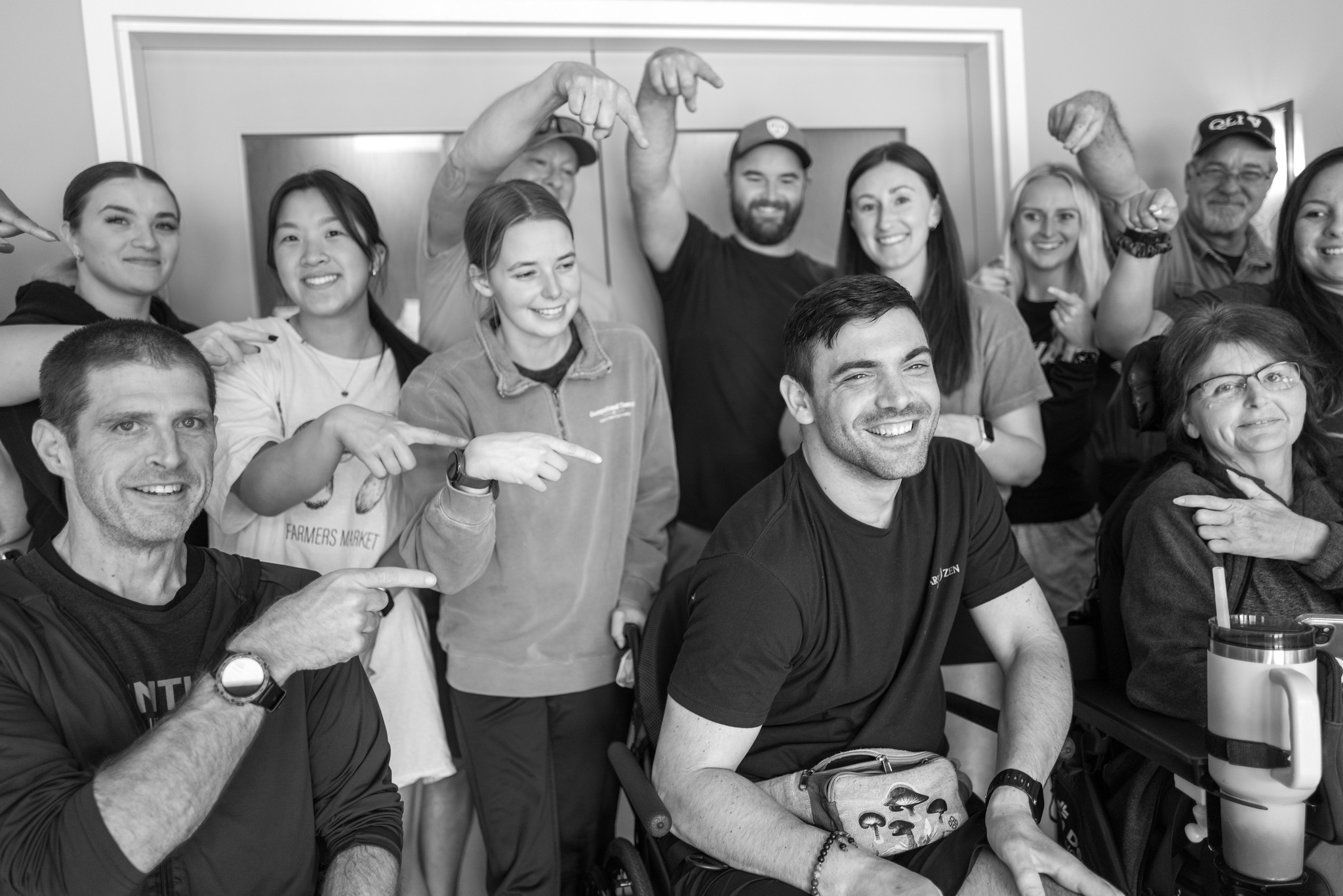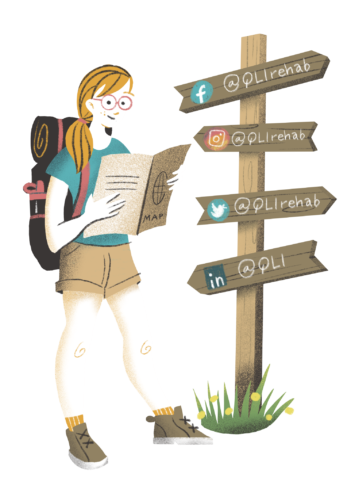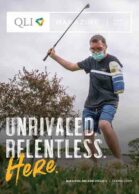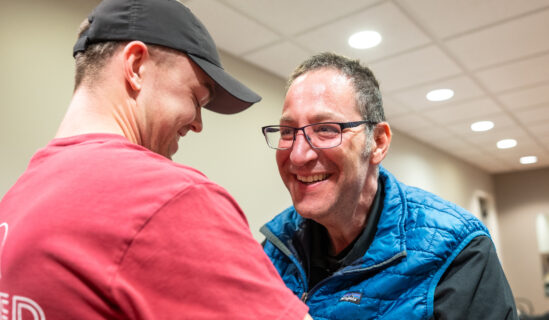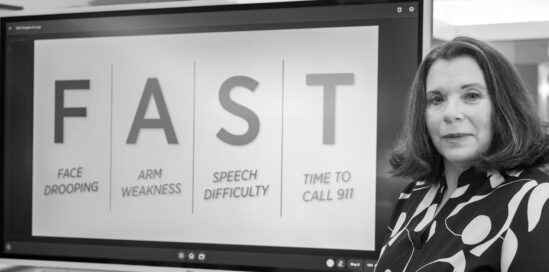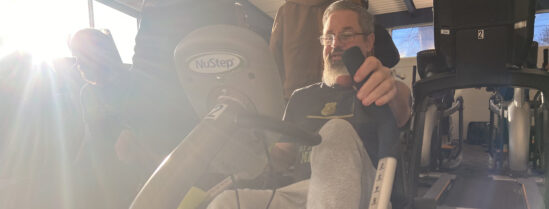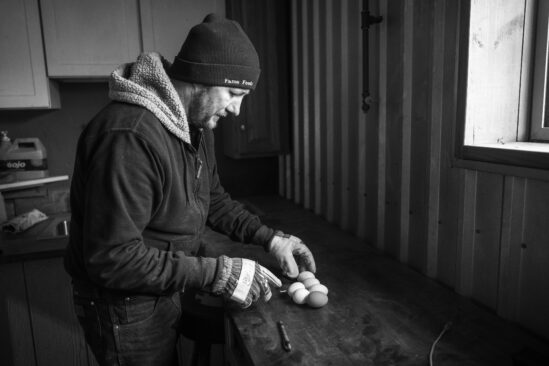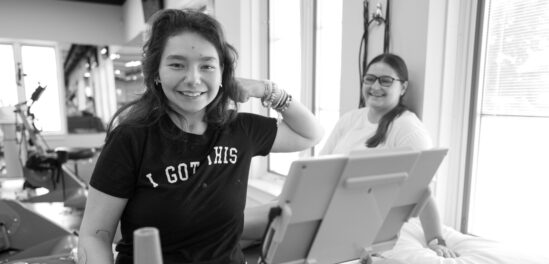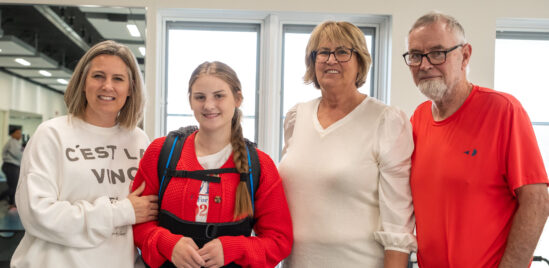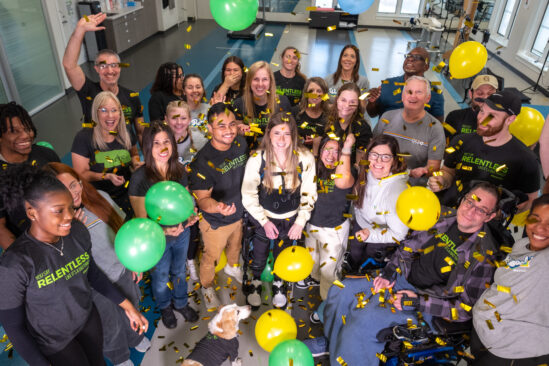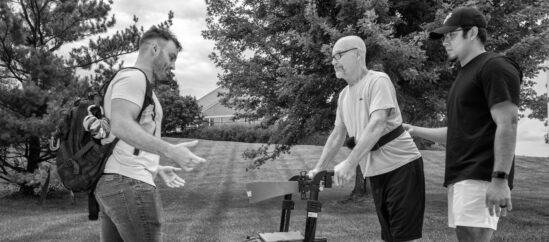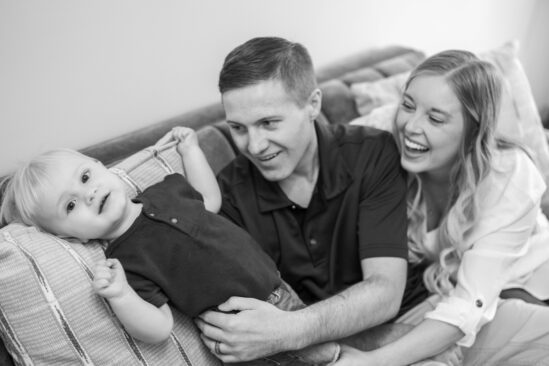 “It’s not even exhilaration, just a different state of mind. Being in control while on the edge of life and death is immensely empowering.” It was a late and exhausting night in 2019 when Cheyne Clark leaped from the top of a 300-foot-tall radio tower. The methodical climb up the ladder to get to the upper platform, and then consider, right before the jump, the possibility that everything could end within a few seconds, did not deter Cheyne. There was relief because of the long hours of waiting—waiting for the sun to go down, for the presence of others or law enforcement to dissipate, and the time would come for the jump. Waiting is half the battle, the other requires the mind to be in the lock of an incredible amount of focus. It’s one thing to think through the motions of a skydive during the fall, but with BASE (Buildings, Antennas, Spans, Earth) jumping, there is no margin for error or just one extra second of thought. With that, a clear focus ahead—complete his first BASE jump, and then go to other places. The journey ahead, if done correctly, would not be the only jump, but the beginning and rededication of a life in pursuit of the edge, the extreme, staring directly into the eye of obliteration and evading that fate.
“It’s not even exhilaration, just a different state of mind. Being in control while on the edge of life and death is immensely empowering.” It was a late and exhausting night in 2019 when Cheyne Clark leaped from the top of a 300-foot-tall radio tower. The methodical climb up the ladder to get to the upper platform, and then consider, right before the jump, the possibility that everything could end within a few seconds, did not deter Cheyne. There was relief because of the long hours of waiting—waiting for the sun to go down, for the presence of others or law enforcement to dissipate, and the time would come for the jump. Waiting is half the battle, the other requires the mind to be in the lock of an incredible amount of focus. It’s one thing to think through the motions of a skydive during the fall, but with BASE (Buildings, Antennas, Spans, Earth) jumping, there is no margin for error or just one extra second of thought. With that, a clear focus ahead—complete his first BASE jump, and then go to other places. The journey ahead, if done correctly, would not be the only jump, but the beginning and rededication of a life in pursuit of the edge, the extreme, staring directly into the eye of obliteration and evading that fate.
“It’s a balance between judgments, skill, and rigging,” says Cheyne, “it’s understanding every variable and knowing your limitations.” That’s why, for him, “skydiving and BASE jumping are the biggest 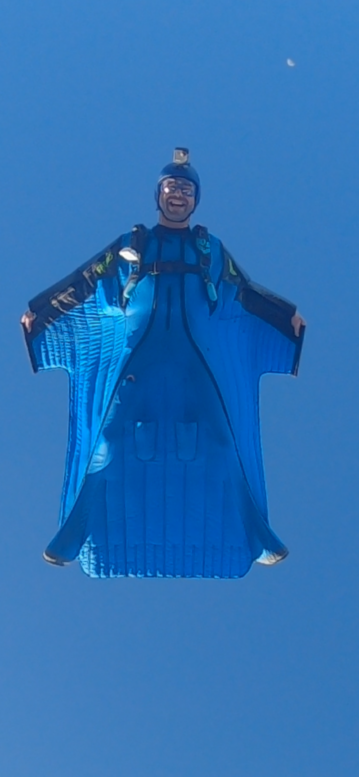 exercises in mindfulness anyone can have.” Cheyne knows no other way to live, and nothing must be left out on the line, no regrets. Over the past five years, Cheyne completed over 300 BASE jumps. Add to that his 2,000+ skydives and innumerable scuba dives and you start to have the picture of who Cheyne is. He courses through the clouds and travels to the depths of the sea, and made his home in the Seattle area, managing and coaching at a gymnastics gym. “I’m not the most competitive person, but I love learning a skill, repeating it and getting better at it, and witnessing that progress. It’s why I love coaching, it gives me immense fulfillment.”
exercises in mindfulness anyone can have.” Cheyne knows no other way to live, and nothing must be left out on the line, no regrets. Over the past five years, Cheyne completed over 300 BASE jumps. Add to that his 2,000+ skydives and innumerable scuba dives and you start to have the picture of who Cheyne is. He courses through the clouds and travels to the depths of the sea, and made his home in the Seattle area, managing and coaching at a gymnastics gym. “I’m not the most competitive person, but I love learning a skill, repeating it and getting better at it, and witnessing that progress. It’s why I love coaching, it gives me immense fulfillment.”
The gym also provided Cheyne with an outlet to practice techniques. “I was prepping for an upcoming jump, doing a running gainer, which is moving forward and flipping backward. I was also testing a new pilot chute. As I jumped, I’d throw the chute between my legs, finish the flip, and as I accelerated, the pilot chute would pull the pin and open up as I became vertical. At the gym I climbed up a 10-foot bar over a free foam pit, just to practice three-quarters of the flip and throw, landing on my stomach in the foam. But I broke my neck. I was focusing too hard on throwing the chute than the flip. I didn’t push off very hard with my legs, I stayed too open in the air, and I didn’t rotate properly.”
Cheyne was classified with a complete spinal cord injury. “It was tough. I wanted to get going immediately. Within a week I started getting back some feeling back on the bottoms of my feet, and they reclassified my injury as incomplete. I started with inpatient rehab at the Harborview Medical Center in Seattle. Felt like I was starting to become more independent, but I was guided through everything I did.” Fortunately for Cheyne, he was able to find his way to QLI.
“When I got to QLI, it was the openness that got to me. It wasn’t a hospital setting, one long hallway with noise. I finally felt a little bit of peace. The opportunity to have that slow down and reset was huge. Every day I spent in the hospital I was thinking—‘what’s the next step?’ QLI was the right step to keep me moving forward.” With someone who had such a high-octane lifestyle as Cheyne, how does one get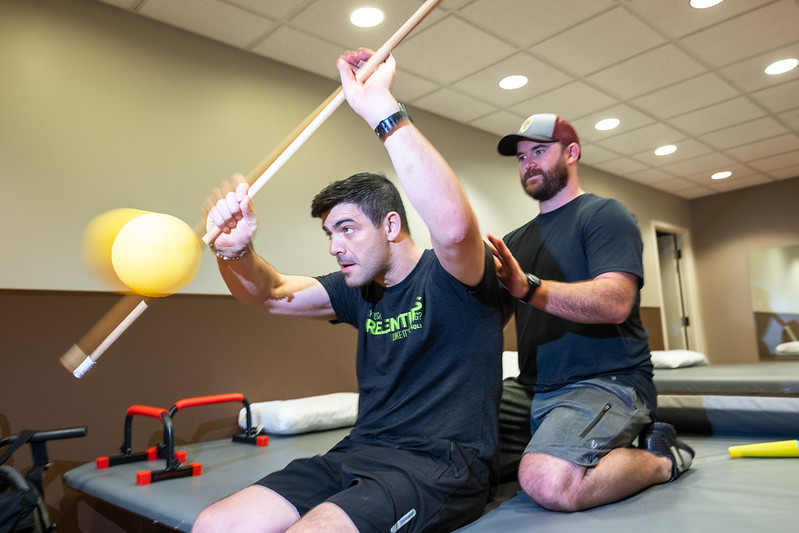 back to life? It is difficult, and not something that can be easily parceled over. QLI, while providing an immense amount of resources dedicated to getting individuals back to life, can’t help Cheyne get back to BASE jumping in the very same way he did it before. But what QLI can do is plant the seeds and focus the recovery on the here and the now, the actionable, all in service to who Cheyne is at his core.
back to life? It is difficult, and not something that can be easily parceled over. QLI, while providing an immense amount of resources dedicated to getting individuals back to life, can’t help Cheyne get back to BASE jumping in the very same way he did it before. But what QLI can do is plant the seeds and focus the recovery on the here and the now, the actionable, all in service to who Cheyne is at his core.
“I could tell right away that he was very educated and in tune with what was going on with his body, and that was very helpful for us to hit the ground running,” says occupational therapist Melissa Faller. “We did talk about the broad overview and big picture, but we also engaged in listing out goals, to better understand and figure out what to do and in what order to do it.” Cheyne’s eyes and mind were always on the far future, wanting to immediately get back behind the wheel to drive, and feeling confident he could do so while overlooking the immense, critical components that allow someone after injury to live independently.
When Cheyne arrived the plan was for a 60-day program,” says Melissa, “spending the first 30 days honing in on dressing, bathing, eating, as well as what equipment he would need. The next 30 days was spent on simulating independent living.” Part of his program was in looking ahead to where Cheyne was discharging, and utilizing supportive technology—practicing tub transfers, and bed transfers, but also working in predictive manners to the environment (Seattle) he would be living in. With car transfers, inherently being difficult, it was important to prepare for what these circumstances might look like.
“I can be kind of stubborn, hard-willed, and determined, so seeing the strengths I did still have, in conjunction with the right mental attitude, was insanely powerful. I have new mantras for every day—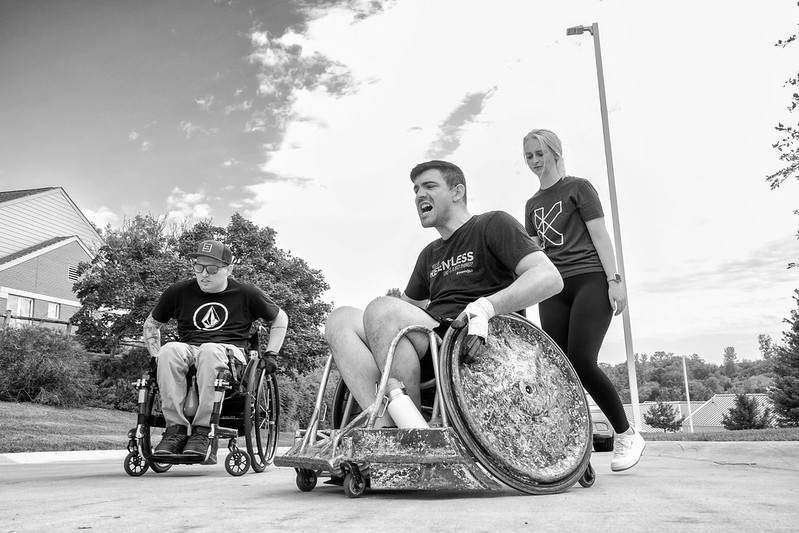 today’s is, “I am enough.” Two weeks ago, it was, “shut up and put your shorts on.” Just take the first step. It might be a step back at first but I always have to keep pushing forward. I’m a completely different person now, and it’s hard to say what has changed, but I’m seeing me as others see me.”
today’s is, “I am enough.” Two weeks ago, it was, “shut up and put your shorts on.” Just take the first step. It might be a step back at first but I always have to keep pushing forward. I’m a completely different person now, and it’s hard to say what has changed, but I’m seeing me as others see me.”
Cheyne’s work ethic and sense of self as made an indelible impression on life path specialist Jack Mahaffey, who notes his “warrior spirit.” The key when re-engaging with sports, hobbies, or activities a client was used to doing, is within the mindset. “I love to work on the mental piece,” says Jack, “continually encouraging Cheyne in the process of getting back to swimming or diving.” Even when looking broader at the possibility of skydiving or BASE jumping, such pursuits are impossible—with the absence of hope. If a client truly believes it is impossible they will not get back to certain activities, then they won’t. But fostering hope and optimism through actionable work and repetition opens the doors to possibility. Sure, it may not look exactly like it did before, but “there’s just a new way to do these things,” Jack advises clients.
“As soon as he was exposed to methods and ideas,” says life path specialist Janelle Thomas, “Cheyne took off. Then he was the one doing the research, coming to me and saying ‘I want to try this’ and ‘how can we figure this out?’” Part of that ‘figuring out’ was simply getting back in the water, with scuba diving
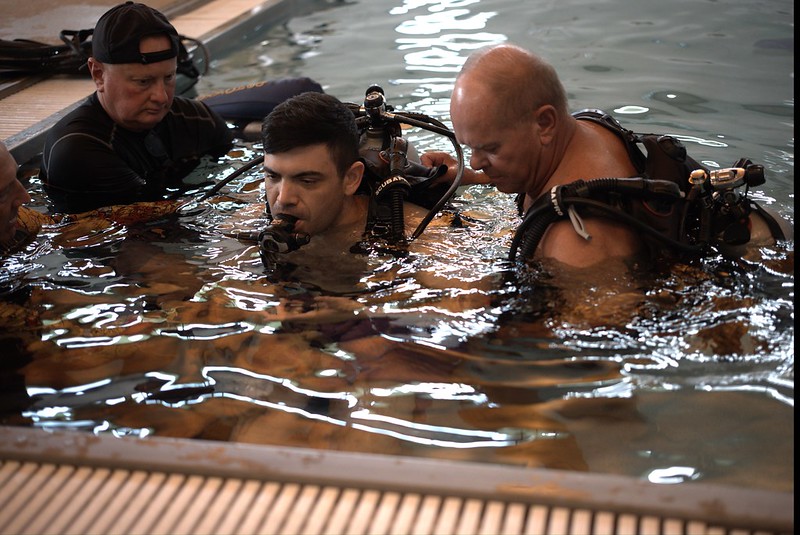
being one of his principal interests that could be readily applied to his program. It started with a session in the East Campus pool.
“There was some hesitation about getting back in the water, Cheyne was concerned there would be nothing he could do. I assured him that the instincts would kick in. Ten minutes into the session, he was doing laps around the pool.”
Another crucial component of Cheyne’s program is beginning to engage him with community partners and organizations that he can use for support and to further his high-octane interests. It began with an outing to DiVentures, a scuba instruction organization in Omaha, and learning more about the organization Dive Pirates Foundation, which provides expansive adaptive scuba diving opportunities all over the world. The session was organized to simply be a test swim, re-engaging Cheyne with a dive environment within the context of his spinal cord injury. It was a process of transferring into the pool, trialing ways to don the gear, and then going into a supported fifteen-minute long submerged dive and swim.
“I wanted the chance to have some time on my own in the pool,” says Cheyne, to swim as unsupported 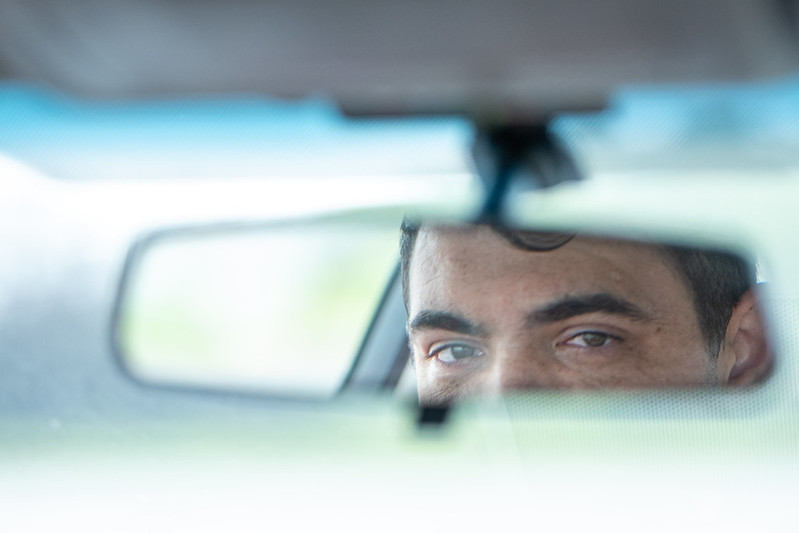 as he could. He believes he can and probably would be able to do it just fine, yet the importance of straddling the line between independence and support is still one for him to navigate as he moves forward back to living in Seattle.
as he could. He believes he can and probably would be able to do it just fine, yet the importance of straddling the line between independence and support is still one for him to navigate as he moves forward back to living in Seattle.
“I just want to be visible,” says Cheyne, “to keep doing things, and find new ways to do things that people might think can’t be done from a wheelchair.” Cheyne is already tapping into the release of before. The quest for the new thrill and peak never ended. It continues, renewed.
